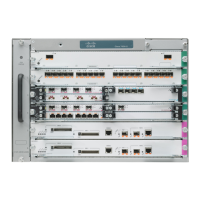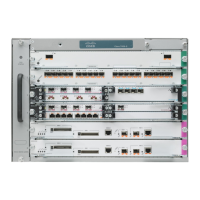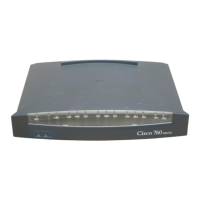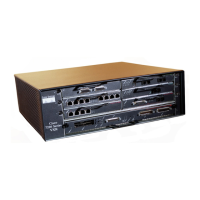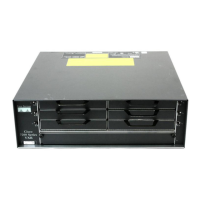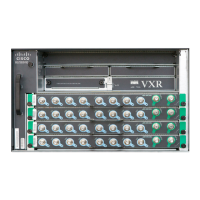1-4
Cisco 7600 Series Router Cisco IOS Software Configuration Guide, Release 12.2SX
OL-4266-08
Chapter 1 Product Overview
Software Features Supported in Hardware by the PFC and DFC
• Policy-based routing (PBR) for route-map sequences that use the match ip address, set ip
next-hop, and ip default next-hop PBR keywords.
To configure PBR, refer to the Cisco IOS Quality of Service Solutions Configuration Guide, Release
12.2, “Classification,” “Configuring Policy-Based Routing,” at this URL:
http://www.cisco.com/en/US/docs/ios/12_2/qos/configuration/guide/qcfpbr_ps1835_TSD_Products_C
onfiguration_Guide_Chapter.html
Note If the MSFC3 address falls within the range of a PBR ACL, traffic addressed to the MSFC3
is policy routed in hardware instead of being forwarded to the MSFC3. To prevent policy
routing of traffic addressed to the MSFC3, configure PBR ACLs to deny traffic addressed to
the MSFC3.
• Except on MPLS interfaces, TCP intercept—To configure TCP intercept, see the “Configuring TCP
Intercept” section on page 33-2.
• Firewall feature set images provide these features:
–
Context-Based Access Control (CBAC) —The PFC installs entries in the NetFlow table to
direct flows that require CBAC to the MSFC where the CBAC is applied in software on the
MSFC.
–
Authentication Proxy—After authentication on the MSFC, the PFC provides TCAM support for
the authentication policy.
–
Port-to-Application Mapping (PAM)—PAM is done in software on the MSFC.
To configure firewall features, see Chapter 44, “Configuring the Cisco IOS Firewall Feature Set.”
• Hardware-assisted NetFlow Aggregation—See “Understanding NDE” section on page 51-2.
Software Features Supported in Hardware by the PFC3 and DFC3
The PFC3 and DFC3 provide hardware support for these Cisco IOS software features:
• Bidirectional Protocol Independent Multicast (PIM) in hardware—See “Understanding How IPv4
Bidirectional PIM Works” section on page 28-7.
• Multiple-path Unicast Reverse Path Forwarding (RPF) Check—To configure Unicast RPF Check,
see the “Configuring Unicast Reverse Path Forwarding Check” section on page 33-2.
• Except on MPLS interfaces, Network Address Translation (NAT) for IPv4 unicast and multicast
traffic.
Note the following information about hardware-assisted NAT:
–
NAT of UDP traffic is supported only in PFC3BXL or PFC3B mode.
–
The PFC3 does not support NAT of multicast traffic.
–
The PFC3 does not support NAT configured with a route-map that specifies length.
–
When you configure NAT and NDE on an interface, the PFC3 sends all traffic in fragmented
packets to the MSFC3 to be processed in software. (CSCdz51590)
To configure NAT, refer to the Cisco IOS IP Configuration Guide, Release 12.2, “IP Addressing and
Services,” “Configuring IP Addressing,” “Configuring Network Address Translation,” at this URL:
http://www.cisco.com/en/US/docs/ios/12_2/ip/configuration/guide/1cfipadr.html
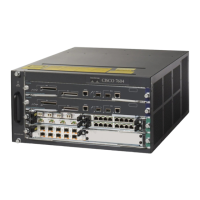
